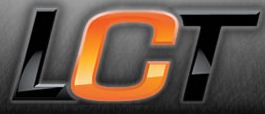|
||
One rule of thumb I always try to follow is to replace the cheapest things first. Here are the best things to check if the engine won't start: 1. Fuel level: Fill gas tank to just below the fill neck so there is room for the gas to expand. If you fill the tank all the way to the top, then gas will leak out as the engine moves around. Also should also check for a dirty or clogged fuel filter and make sure the fuel valve is in the "ON" position. 2. Prime or Choke the engine: If the engine has a primer or choke, use them. Prime the engine 3 times and then attempt to start it. Choke engine until it starts to fire and then open the choke. If this does not work, then use the below instructions. 3. It's possible the Carburetor is clogged: NOTE: You may want to check the engine for spark before messing with the carburetor. To unclog a carburetor, remove the air filter and spray carburetor cleaner or starting fluid into the air intake and crank the engine. If engine fires and then quits, stop the fuel flow, remove the bowl nut and bowl. Blow compressed air or a run tag wire through the holes in the bowl nut and clean the bowl of any debris. (A tag wire is usually the best way to handle this) If there is a lot of debris in the bowl, dispose properly of the old gasoline and flush the gas tank, fuel line, and replace fuel filter (if your engine has one). If the high speed is adjustable, remove the adjusting needle from the nut and run a wire through the holes. NOTE: **Tecumseh engines with an adjustable high speed have a third pinhole under the top set of threads. Make sure this hole is clean. Use a tag wire will to clean the hole. Make sure you can see the wire through the nut when looking into it. Also, run the tag wire up the nozzle in the carburetor. On large 1 and 2 piece Briggs and Stratton Flo-Jets, make sure you remove the high speed nozzle out of the carburetor. NOTE: **You must have a 1/4" screw driver that DOES NOT have the bulges on the side. Using a regular screw driver will damage the threads.** Blow air through all the holes and make sure you can see light through all of them. Reinstall the nozzle until tight. Reinstall the the bowl and then nut. Screw the adjustment screw in until it is finger tight and then back it out 1 1/2 turn to get the pre adjustment. 4. The Engine has been over choked: Open choke and crank engine with the throttle at wide open until the engine starts. 5. Check the spark plug: Make sure you have a good connection. If it is really black it may be "carbon shorted", (i.e. Have carbon between the electrode gap). Clean or replace it. If the plug is pitted, burned, or has cracked porcelain, replace it with an identical replacement spark plug. Spark plugs are cheap and you should keep an extra in your garage in case of failure. 6. Check for spark: Using a commercially available spark tester, test for spark by putting the spark plug wire (high-tension lead) on one side of the tester and then clip the other side of the tester to the shroud, fins or head bolts. (i.e. Ground it) You can also ground the plug, with high tension lead on it, to the head of the engine and crank on the engine. NOTE: **Keep the spark plug away from the spark plug hole so spark does not jump and ignite any fuel vapors.** If a spark is present you will see blue sparks jump the electrode gap. If the mower is older than 1983, the points could be burned. Or the solid state (electronic ignition) magneto could be bad. 7. Safety devices (Also known as Compliance Positive Stop) are disengaged: Put the equipment in Neutral or Park, disengage the deck attachment or PTO and depress the clutch. Some lawn tractors require you to sit on the seat when starting the engine. If all the safety devices are engaged and the equipment still will not start, there might be a problem in the wiring or the switches or modules have gone bad. 8. Ground (stop) wire is grounded: Sometimes the the stop wire will rub against the flywheel and cause it to be grounded. You will need to remove the air shroud to check it. If the wire is touching the flywheel, repair the wire and reroute it so it can't happen again. 9. Remote fuel pump is not pumping fuel: This problem occurs when the diaphragms get hard in the fuel pump. Remove the fuel pump from the engine shroud or off of the tractor itself and take the fuel pump apart on a work bench. Always use Model and Type numbers off of the engine to allocate the correct parts for the repair. If the fuel pump is mounted on the tractor, not the engine, then you will have to get the Model number off of the TRACTOR to get the diaphragm part number. Of course, you can also replace the entire fuel pump. Another problem is low or no vacuum at the pulse line. To test for pulse, remove pulse line from the fuel pump and put your finger over it. Crank on the engine. If you feel your finger being sucked on, then you have sufficient vacuum to operate pump. If you have no or little vacuum, then check for a cracked or broken hose and replace it if you find a problem. 10. Problem with safety switch: Either the safety switch is broken or the wires going to it are loose, or have some sort of corrosion on it. Check for good connections. 11. Problem with zone start cable: If you have a push mower, it is possible that the zone start cable (cable connected to the bail you pull back to start the engine) is not pulling the flywheel brake back all the way, thus causing the switch to not break contact. To remedy this, either tie a knot in the metal wire to shorten it or, if possible, drill a hole just a little lower than the current mounting hole and mount the cable to that hole. 12. Fuel Cap: It's possible the fuel cap is not venting. A non venting fuel cap will cause a vacuum in the tank, preventing the flow of fuel to the carburetor. If the fuel cap is not venting replace the cap |















